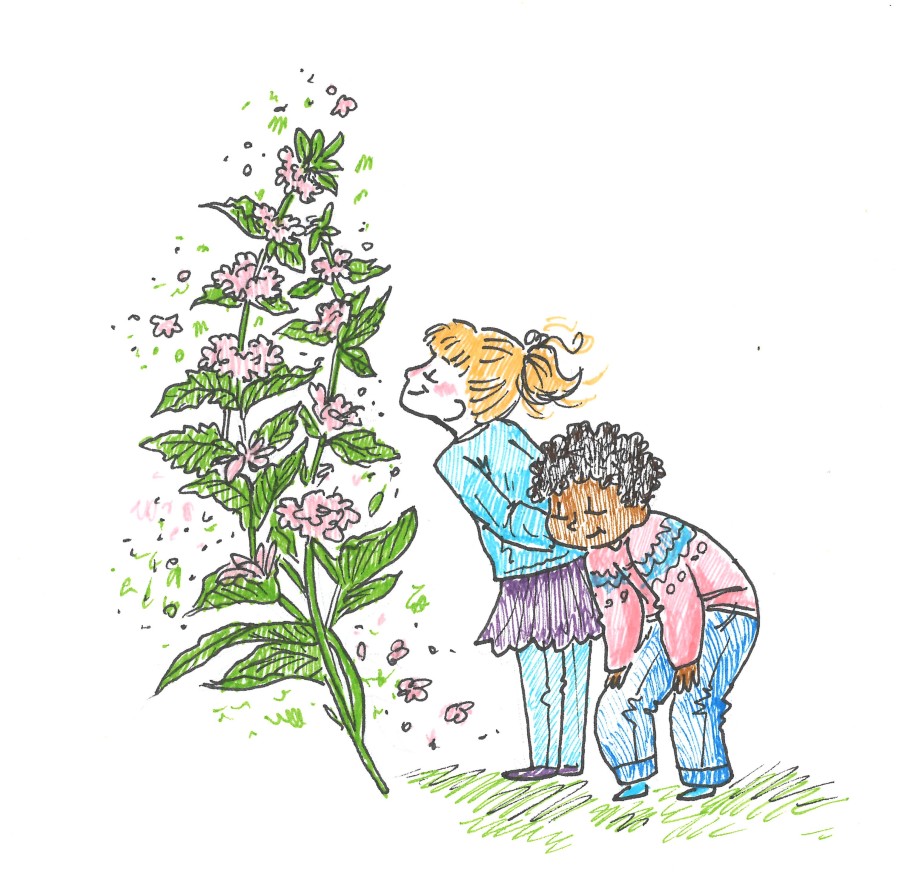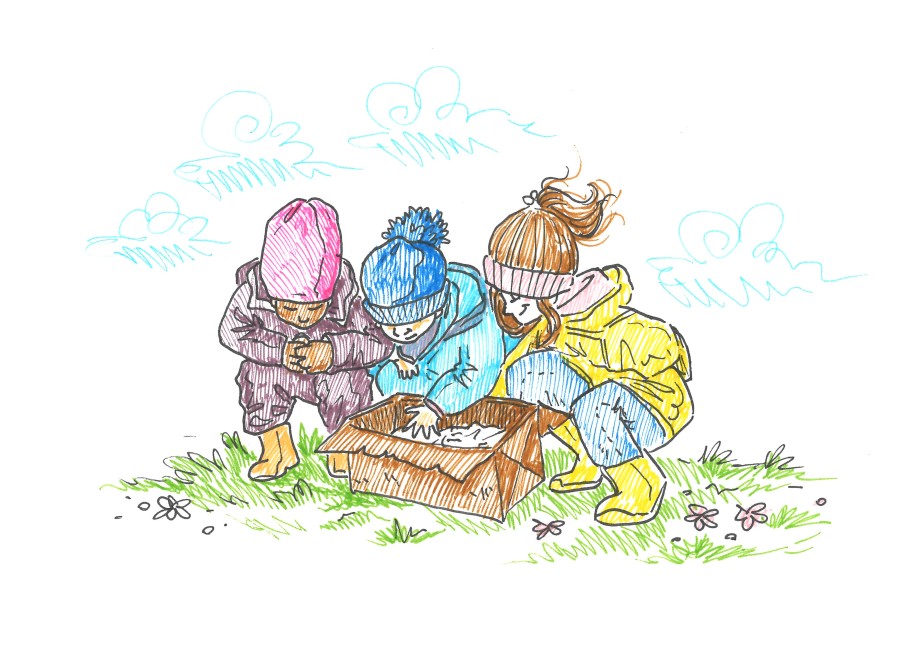Odors change as the weather changes. Rain or sunshine, there are interesting smells, both outside and inside, to discover, explore and talk about together with children. All you need is your nose. Let your fantasy lead the way and discover the magic of smell together with the children.
Smell is one of the most pervasive senses, but also one of the least understood. Did you know that humans can distinguish more odours than musical tones or colours? In fact, we can detect as many as one trillion odours! However, we only have a few words for them.
This FILIORUM resource draws on the results from the research article Children’s stories and multisensory engagement: insights from a cultural probes study by Natalia Kucirkova and Monika Kamola (2022).
In the study, the authors created story activities that engaged the children’s senses. The analysis shows that the children engaged their senses selectively. The visual and haptic engagement was the most intensively engaged senses during the activity, while smell, taste and hearing were the least intensively engaged. The research shows that smell can open up magical worlds by connecting our memories and emotions. The video presents several examples for stimulating children’s sense of smell.
The focus on children's sense of smell opens up new ways of understanding and supporting children's learning and development.
Aim: By using this resource, the educators’ awareness about why it is important to stimulate all children's senses with a specific focus on children's sense of smell, and how this can be done will be raised. For whom: Educators in early years, e.g. at a staff meeting. Recommended time: 30-45 minutes. Tips for using this resource: 1. Watch the video. 2. Discuss the reflection questions, for example in groups with other colleagues. 3. Explore the activities together with the children (see Activities). 4. Share your experiences with each other at the next staff meeting.

Questions for reflection
- How do you use activities which engage the children’s experiences with smell?
- How do you stimulate children’s sense of smell?
Printable version of the resource

When you are working with children’s sense of smell, encourage them to think of different memories and images to help them remember the various scents. When you’re exploring new smells – let the children respond in any way they want (verbally, with body language, drawing, taking a picture).
Take the children along on a “scent trail”. Small objects can be collected and placed in a “smell box”. Children can draw pictures of what they smelled on the trail. These objects and pictures can be used when you discuss what smells good and bad.
The video is made by the Learning environment centre as part of the research project "Sensory books".
Early childhood research from FILIORUM
This resource from FILIORUM - Centre for Research in Early Education and Care draws on the results from the following research article:
Kucirkova, N. & Kamola, M. (2022) Children’s stories and multisensory engagement: insights from a cultural probes study, International Journal of Educational Research, https://doi.org/10.1016/j.ijer.2022.101995
Aim
To understand the central sensory elements that are important to children’s storytelling.
Research question
- How do children integrate different senses into their activities?
Methods
Naturalistic observation of the children's daily activities in the nursery/kindergarten with a specific focus on their experience of smell and the children's creation of their own "storytelling boxes". The researchers shared a box with simple materials such as figures, pebbles and leaves, with the children for them to tell and create their own "storytelling box". The creation process of children's story boxes and their final forms were analysed in relation to key themes and children’s awareness of sensory integration.
Data material
Photos of the children's storytelling boxes.
Key findings
Children created diverse stories with realistic story-plots and emphasised the visual aspect and haptic qualities of their stories.
Sensory books – Coming back to our senses to transform children’s digital reading - This is the first project to examine the educational value of olfaction in children’s learning, with a specific focus on children’s reading.
The explanatory power of sensory reading for early childhood research: The role of hidden senses - a research article from 2022 where Kucirkova explains why a multisensorisc focus (such as smell and taste) is important in early childhood research and education.
Impact of indoor aroma on students’ mood and learning performance - a research article from 2022 where Choi et al. explore the effect of rosemary, lemon and peppermint aromas on learning performance.

Contributing authors
Norwegian Centre for Learning Environment and Behavioral Research in Education
Faculty Administration UH
Administrasjon NSLA Avd. Stavanger

